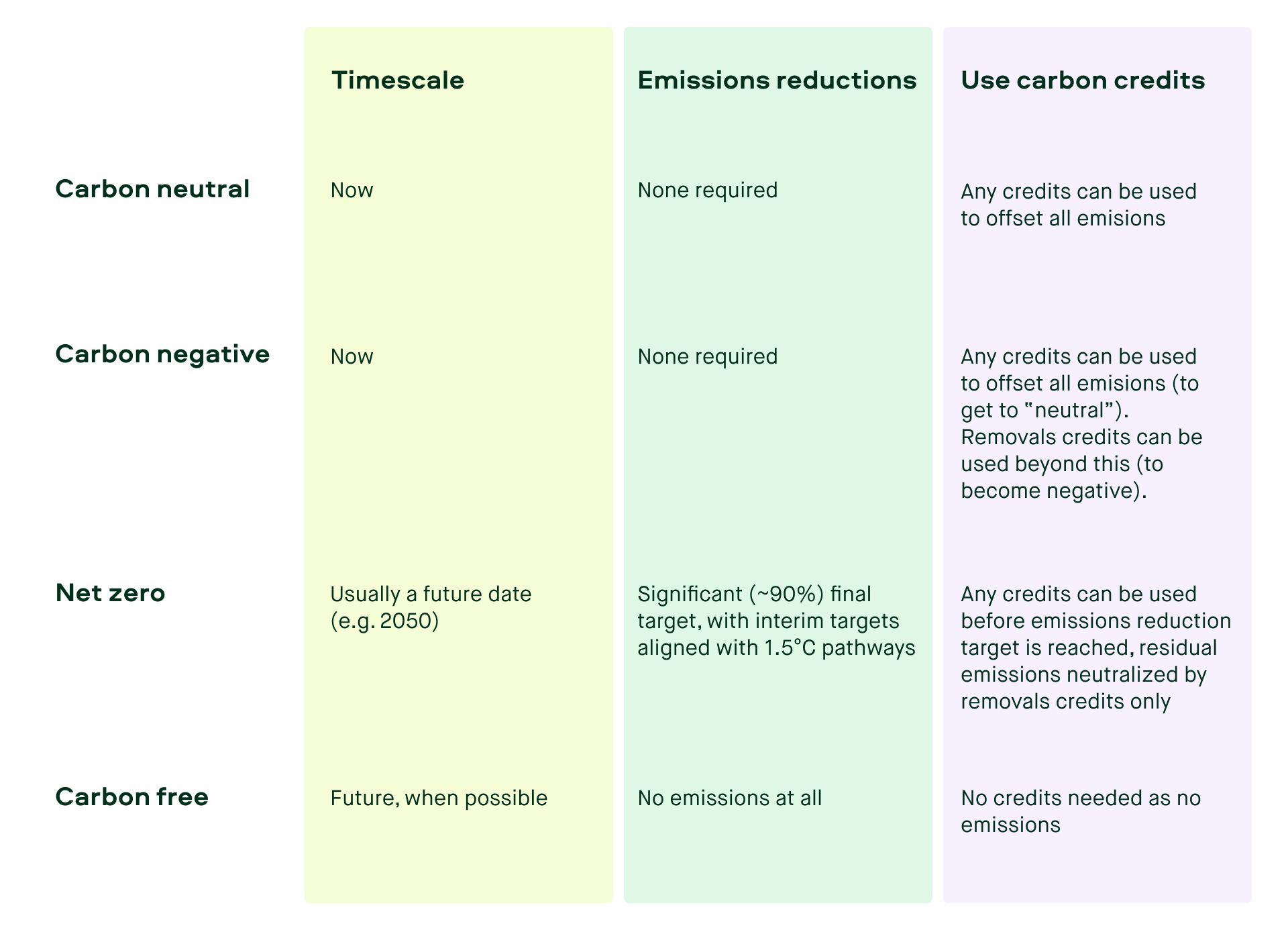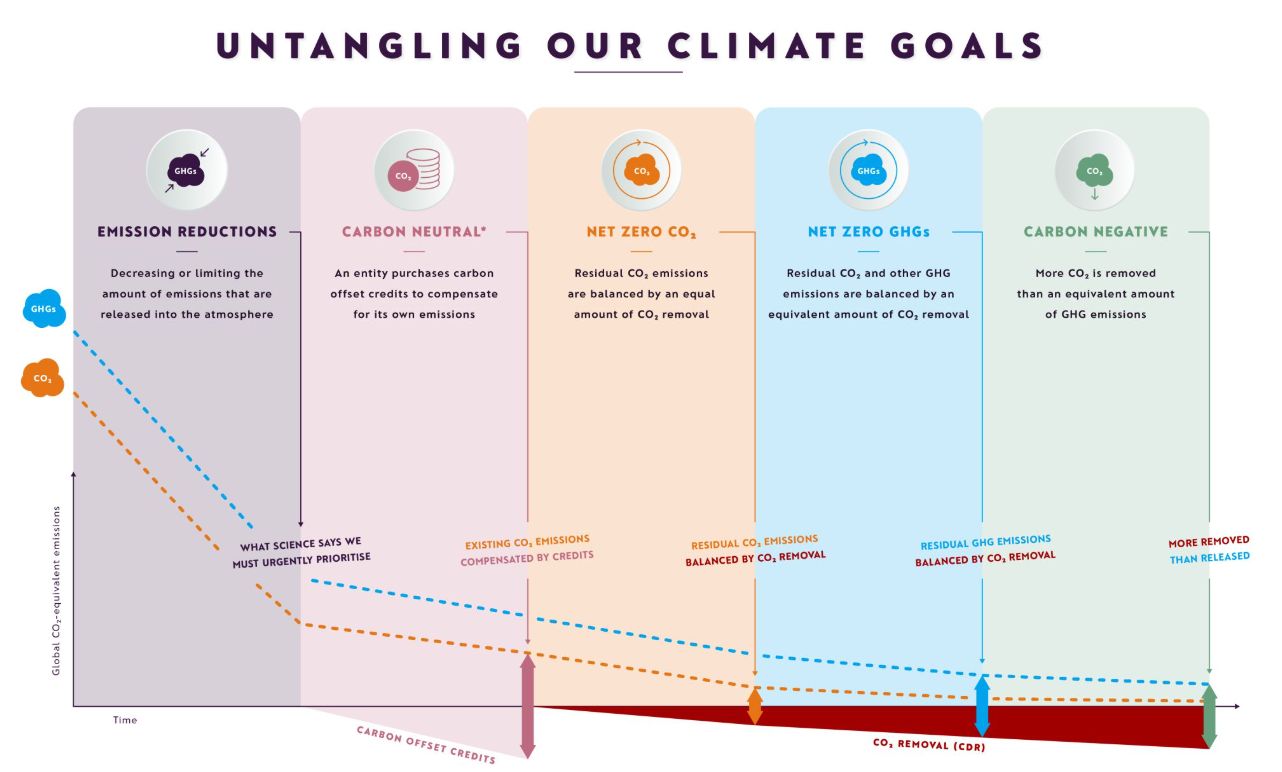You are here :
Home 𝐂𝐚𝐫𝐛𝐨𝐧 𝐍𝐞𝐮𝐭𝐫𝐚𝐥 𝐯𝐬. 𝐍𝐞𝐭 𝐙𝐞𝐫𝐨: 𝐖𝐡𝐚𝐭'𝐬 𝐭𝐡𝐞 𝐃𝐢𝐟𝐟𝐞𝐫𝐞𝐧𝐜𝐞?
|
Last Updated:: 03/02/2025
𝐂𝐚𝐫𝐛𝐨𝐧 𝐍𝐞𝐮𝐭𝐫𝐚𝐥 𝐯𝐬. 𝐍𝐞𝐭 𝐙𝐞𝐫𝐨: 𝐖𝐡𝐚𝐭'𝐬 𝐭𝐡𝐞 𝐃𝐢𝐟𝐟𝐞𝐫𝐞𝐧𝐜𝐞?
Understanding the distinction between "carbon neutral" and "net zero" is essential for making informed decisions in climate action.
What is Carbon Neutral?
- Balancing CO₂ emissions with equivalent removal or offsetting.
- Achieved through carbon credits, reforestation projects, or renewable energy investments.
- Focuses on immediate action to balance emissions without necessarily reducing them.
What is NetZero?
- Involves drastically reducing all greenhouse gas emissions (CO₂, methane, nitrous oxide, etc.) to as close to zero as possible.
- Emphasizes cutting emissions at the source and offsets only as a last resort.
- Requires long-term systemic changes, such as adopting renewable energy and increasing energy efficiency.
Key Differences
Scope: Carbon neutrality focuses on CO₂; net zero covers all greenhouse gases.
Approach: Carbon neutrality often relies on offsets; net zero prioritizes emission reduction at the source.
Timeframe: Carbon neutrality can be achieved quickly; net zero requires systemic and long-term efforts.
Impact: Carbon neutrality balances emissions but doesn’t necessarily reduce them; net zero aims for substantial reductions and sustainability.
Additional Terms Explained
Carbon Negative: Removing more CO₂ than emitted, effectively reducing overall carbon levels.
Carbon Positive: Synonymous with carbon negative, focusing on creating a net-positive impact.
Climate Positive: Beyond neutral, creating additional environmental and societal benefits.
Carbon Zero: Producing no carbon emissions, typically through renewable energy.
Climate Neutral: Balances all greenhouse gases, ensuring no net contribution to climate change.
Important Standards and Regulations
PAS 2060: International standard for achieving and certifying carbon neutrality.
Science-Based Targets Initiative (SBTi): Aligns corporate climate goals with the latest climate science.
GHG Protocol: Global standard for calculating and categorizing emissions across hashtag#Scopes 1, 2, and 3.
Corporate Sustainability Reporting Directive (CSRD): EU directive requiring enhanced sustainability data disclosure.
Streamlined Energy and Carbon Reporting (SECR): Simplifies energy use and emissions disclosures in the UK.
Ready to Take Action?
Analyze emissions across operations and supply chains, including direct (Scope 1), indirect (Scope 2), and value chain (Scope 3) emissions.
Identify hotspots and take targeted actions to reduce emissions.
Use tools like the CarbonCloud platform for accurate and compliant emissions data.


#CarbonNeutral || #NetZero || #ClimateAction || #Sustainability || #GreenhouseGas || #CarbonFootprint || #RenewableEnergy || #CarbonAccounting || #ClimateNeutral || #SustainableFuture || #FoodWaste || #CircularEconomy || #SustainableAgriculture || #RegenerativeFarming || #Transparency || #CarbonCredits || #EmissionReduction || #ClimatePositive || #CarbonOffset || #EnvironmentalImpact
(Source: LinkedIn Post by: Sachin Sharma )